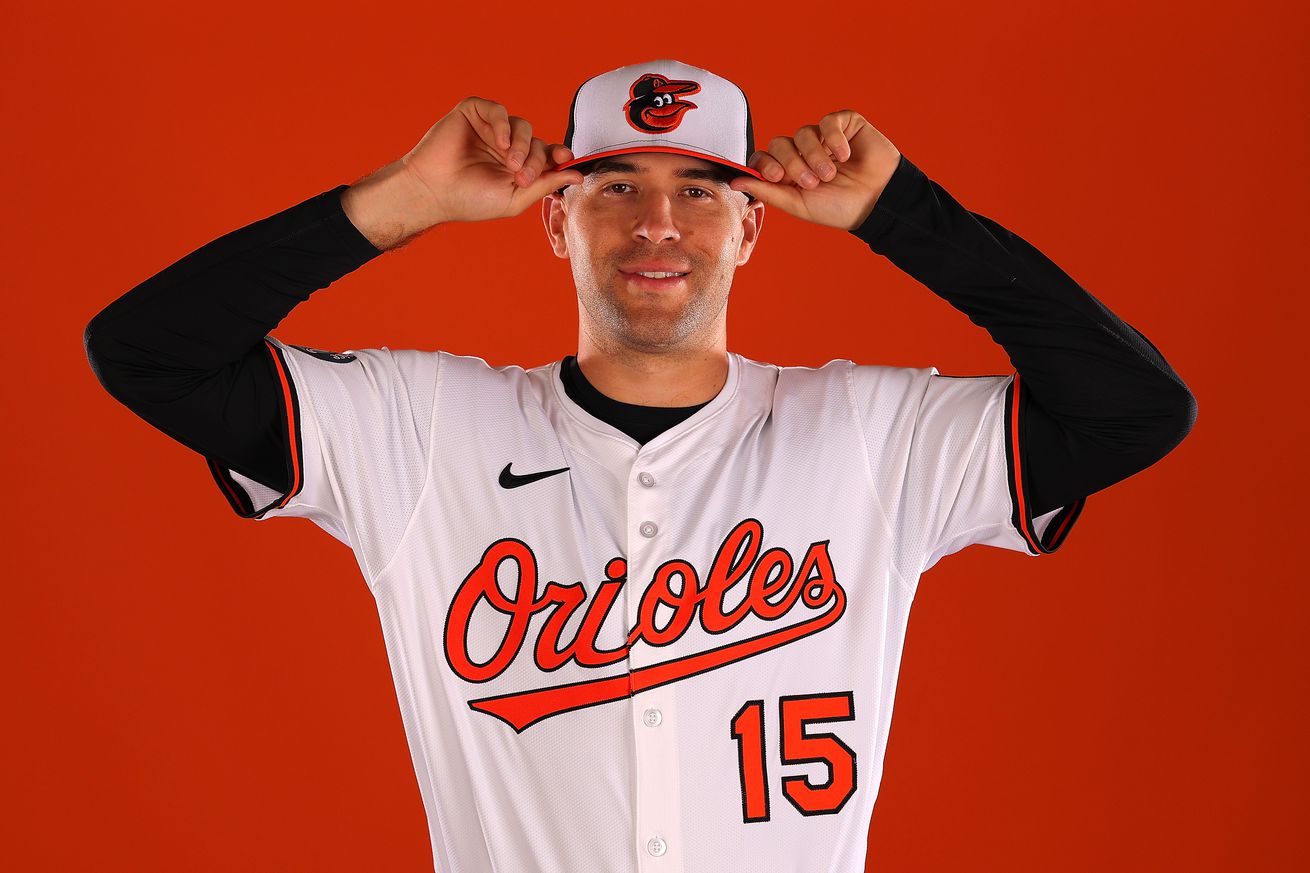
A former top prospect that has dealt with oodles of injuries the last few seasons looks to squeeze into a crowded Orioles outfield.
Not so long ago, Dylan Carlson looked like a franchise cornerstone in the making. He shot up prospect charts and burst onto the big league scene with the St. Louis Cardinals. But since 2022 he has struggled to stay healthy, and when he has been on an MLB field his performance has been poor. For the Orioles, he represents a low-risk reclamation project that provides depth at all three outfield spots.
St. Louis selected Carlson out of Elk Grove High School in California with the 33rd overall pick in the 2016 draft. He was young for the class, not turning 18 until the offseason following his first year of pro ball. As such, the organization took their time with the prospect.
Carlson made it to High-A in 2018, posting a 112 wRC+. That earned him a promotion to Double-A to start 2019. That is where he began to shoot up prospect charts and was named to the MLB Futures Game. Over 108 games in Double-A, he slashed .281/.364/.390, a 142 wRC+, and 21 home runs. The Cardinals bumped him to Triple-A near the end of the season, and he just kept hitting. In 18 games he smacked five home runs and posted a 1.099 OPS.
That offseason, a whole lot happened. First, Carlson was named to all of the big Top 100 lists. Baseball America had him as the 10th-best prospect in baseball, MLB put him 17th, and Baseball Prospectus 18th.
Then, a worldwide pandemic hit and likely upended the Cardinals plans for their promising youngster. He headed to the team’s alternate training site, where he worked away until earning the big league call on August 15, about three weeks into the shortened season.
Carlson’s first cup of MLB coffee was bitter. Over 35 games he hit .200/252/.364. But he still made St. Louis’ postseason roster, and did better. In three games—as the team’s clean up hitter to boot— he went 3-for-9 with four walks, and a double. That set the stage for his proper rookie season in 2021, which is still his best work to date.
Over 149 games in his first full season, Carlson produced a .266/.343/.437 slash with 18 home runs, 31 doubles, and four triples; good for a 115 OPS+. That made the then-22-year-old one of the better players on a 90-win Cardinals team, and felt like a catapult towards a tremendous career. He’s still waiting to take off.
Carlson entered 2022 as the Cardinals everyday right fielder, but scuffled out of the gate with a .488 OPS in April. Things improved in May (.837 OPS), and then he suffered a hamstring injury. He was back in June, and kept on hitting (.937 OPS), before falling off and posting sub-.700 OPS in each of the final three months of the season. That included September, when he missed some time with a thumb sprain. His year-end numbers weren’t bad (1.9 bWAR, 99 OPS+), but they also represented a clear step back.
The entirety of 2023 was a continuation of what Carlson went through the second half of the previous season. He played in just 76 games due to a left ankle injury that popped up in May and lingered throughout the summer. His final game of the season came on August 9.
But Carlson’s most difficult season of all came just last year. He didn’t get into a regular season game until early May due to multiple injuries suffered in the spring. He had collided with teammate Jordan Walker while chasing a fly ball in late March. During the collision and subsequent fall to the ground, Carlson hurt his left shoulder, hip, and ankle. He missed about six weeks.
When Carlson returned, it never quite clicked. In 59 games with the Cardinals he had a .198/.275/.240 slash line with zero home runs, and five doubles. He was DFA’d and later traded to the Rays in late July. Things went only slightly better there as Carlson put together a .219/.299/.316 slash line over 37 games.
And that brings him to now. The Orioles gave Carlson a one-year, $975,000 contract in January to join a crowded outfield picture.
His odds of making the squad out of spring training feel remote. The O’s have a starting outfield in Cedric Mullins, Tyler O’Neill, and Colton Cowser. They have viable alternatives in Heston Kjerstad and Ramon Laureano. One would assume that all five of those players are ahead of Carlson in the organizational depth chart.
That does not mean that Carlson is without purpose in the organization. At the very least, he should be solid depth in Triple-A. He has options remaining, and could plug in well enough if an injury arises in Baltimore.
If you really want to be optimistic, consider what a hot prospect Carlson was, and how well he performed early in his career. Maybe this is a guy that has just had some bad injury luck. If he is truly healthy, perhaps he could leap frog a few people in the organization?
The most likely outcome is that Carlson hangs in the minors for most of the year, and pops up a time or two if O’Neill or Cowser have to take an IL stint. Is that worth $975,000? Mike Elias seems to think so, and who’s to tell him that he’s wrong on this point.
